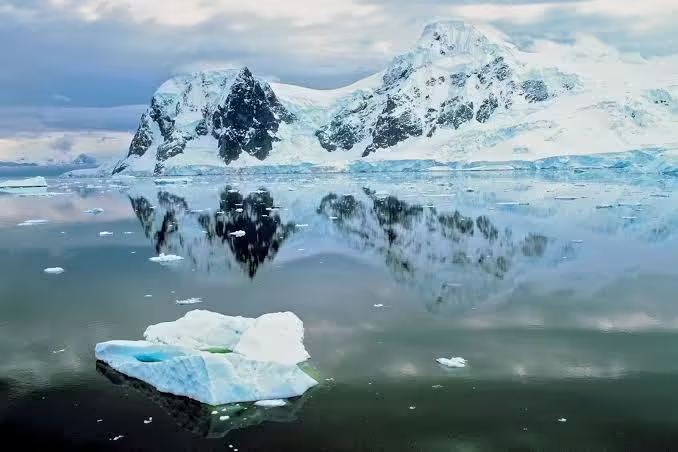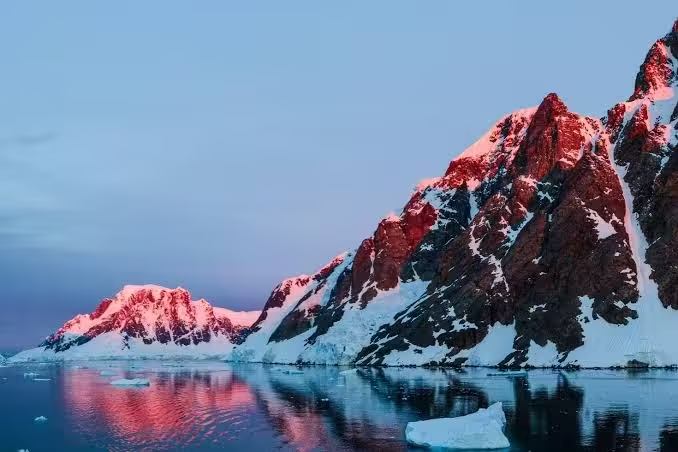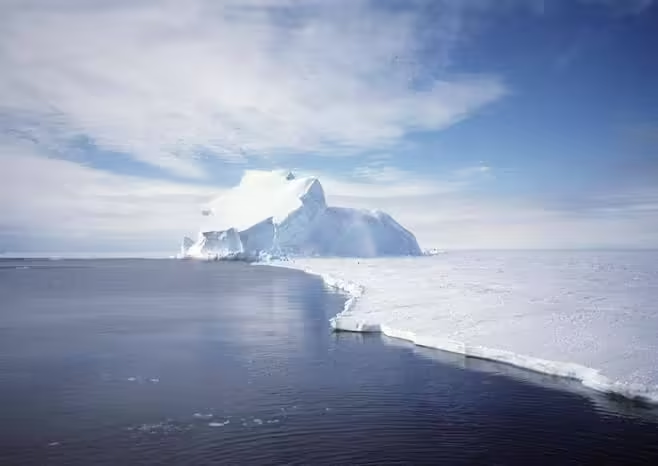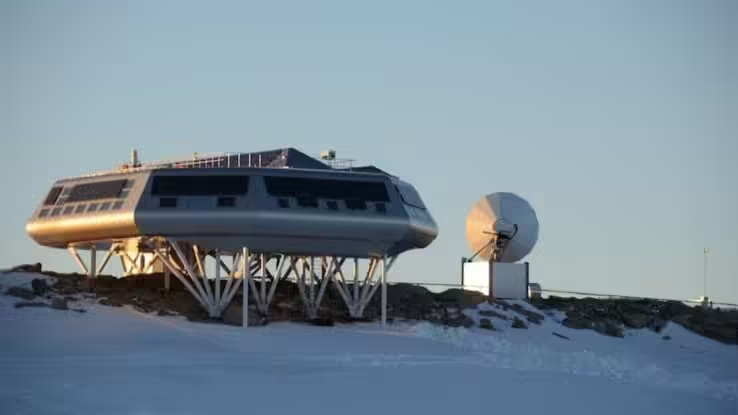Secrets Under the Ice: Unveiling the Mysteries of Antarctica
Table of Contents
Introduction
The land of extremes and enigmas is the continent of Antarctica. The huge ice sheets in it store secrets, which have been of great interest to researchers, explorers, and writers for hundreds of years. From towering ice sheets to subglacial mysterious lakes, Antarctica provides a window to Earth’s past, present, and future. Let’s start this journey to reveal some of these deep, hidden mysteries of this frozen frontier.

The Geographic and Climatic Extremes
Antarctica boasts the superlative extremes. It is, in fact the coldest, driest, and windiest continent on Earth. Some areas inside the interior go down to as low as -80°C (-112°F). Along the coasts, the climate is even more mild by comparison. Another of the geographical and climatic extremes of Antarctica is that it is home to the largest desert-the interior, with a mean amount of less than 20 millimeters (0.8 inches) precipitation annually.

Geographically, Antarctica is dominated by extensive ice sheets and glaciers that cover about 98% of its surface. The Transantarctic Mountains stretch across the continent and unique features like the Dry Valleys and the subglacial Lake Vostok add a dimension to the geographical intrigue of this land.
Expeditions and Discoveries Over Time
The history of exploring Antarctica is full of stories of bravado and perseverance. Initially, these were the solo expeditions of explorers such as Ernest Shackleton and Robert Falcon Scott and Roald Amundsen, but modern scientific research has emerged in their wake. One of the most famous survival stories of all time in exploration is from Shackleton’s Imperial Trans-Antarctic Expedition from 1914 to 1917.

Many of the most important discoveries made on these early expeditions, such as the South Pole and around the edges of the continent, have laid a basis from which further scientific research can be built. The works of these early adventurers have illuminated much of what is known about the role that Antarctica plays in the greater biosphere of the world.
Antarctica Ice Sheets and Glaciers
About 60% of fresh water in the world is locked into ice in Antarctica, a continent that plays an extremely important role in maintaining global climate systems. Two critical ice sheets are the massive East Antarctic Ice Sheet and the smaller but highly dynamic West Antarctic Ice Sheet. New data received from satellites show large-scale ice losses on West Antarctica, which has been adding to the rise in the sea level.

The monitored rapid melting rate rates include the Pine Island and Thwaites Glaciers. Such changes have profound implications for sea levels and global climate patterns.
Glaciers or hidden lakes and subglacial ecosystems
Bacteria, microorganisms, and other vital, isolated, and unique micro life survive beneath the ice of Antarctica in these subglacial lakes. One of the most famous lakes is Lake Vostok. This isolated subglacial lake was found with extreme conditions of microbial life that have defied our understanding of life’s resilience and adaptability.

These subglacial lakes hold clues to past conditions in climate changes and potential life on other icy bodies, such as Jupiter’s moon Europa.
The Fossil Record Under the Ice
Fossils found in Antarctica are the window through which one could look into this island continent’s past. Fossils of ancient plants and animals are uncovered that once covered this continent; otherwise, it had a temperate climate with green forests. Fossils of dinosaurs, especially Cryolophosaurus, point towards when Antarctica was a part of the supercontinent Gondwana.

These findings help the scientists reconstruct scenes of how past climates were and understand the effects of continental drift and climate change on our planet.

Meteorites and Space Research
Antarctica is considered one of the best locations for discovering meteorites due to pristine ice and stable environment. Meteorites here are essentially well-preserved, hence giving a clearer image of how our planet and the solar system came into existence.

This unique environment also supports space research because analogs in Martian environments aid the development of future space missions.
Climate Change and Consequences
Climate change has a strong impact on Antarctica. Global warming leads to ice melts and thus destabilizes the ice shelves. This, of course feeds global sea level rise, which endangers all coastal communities worldwide.

Scientific research conducted in Antarctica allow an opportunity to predict future trends of climate change and develop strategies that could reverse the effects of global warming.
The Ozone Hole and Environmental Studies
The identification of the ozone hole over Antarctica in the 1980s is said to be the wake-up call for environmental protection. The Antarctic ozone hole occurs every spring as CFCs and other chlorine-containing substances release ozone.
Continuous research in Antarctica remains highly essential in unearthing the mechanisms of ozone depletion and subsequent recovery of the ozone layer, therefore validating the effectiveness of international environmental treaty, the Montreal Protocol.

Research Stations
There are many research stations in Antarctica, managed by various countries from all around the world. Some of the examples include McMurdo Station (USA), Rothera Research Station (UK), and Vostok Station (Russia). Such sundry researches performed under these units vary from glaciology to astrophysics.
The Antarctic science is one particular field where international cooperation is synonymous as it promotes collaboration and information sharing. Such a movement helps the entire world overcome scientific barriers.

Mysteries of the Antarctic Ocean
The southernmost ocean around Antarctica is packed with many species of life that are different from other marine life. It is home to colossal squid but also contains smaller bioluminescent fish and many other organisms that show incredible biodiversity. The research in these areas explains what scientists need to live in extreme conditions.
The underwater region has, through its exploration, brought much new knowledge as there has come into view hidden ranges of mountains and deep-sea vents, which have greatly upgraded our knowledge of the underwater landscape of Earth.

Antarctica in Popular Culture
Antarctica has intrigued writers and filmmakers, featuring in novels like H.P. Lovecraft’s “At the Mountains of Madness” and films like “The Thing.” Such drama productions, mostly fictive, unfold the meaning of a mysterious continent-an enigmatic and extraterrestrial-like land.
Popular culture has led to a growing awareness about the importance of Antarctica and its fragile environment.
Future of Antarctic Exploration
Recent Findings Even as technology is likely to advance in the future, the research on the Antarctic still has good promise. Soon, we will hear of times when AUVs and satellites monitoring this far-flung area will greatly enhance our capacity to explore it. In the near future expeditions will be concentrated on what remains unkown about the hidden features of the continent and their impact around the globe.
As technology evolves so do the views of unlocking the remaining mysteries of Antarctica and will lead to great discoveries.

The Legal Framework Over Antarctica
The governance of Antarctica is extraordinary; there is the Antarctic Treaty System that ensures the continent should be used exclusively for peaceful purposes and science research. The treaty has banned military activity and mineral mining on the premise of preserving an immaculate environment in Antarctica.
The measures in the treaty, particularly its environmental protection measures, are necessary to preserve the balance of Antarctic ecosystems.
Conclusion
Antarctica is one of the most mysterious and scientifically valuable places on Earth. Extremes of conditions, hidden ecosystems, and unique features which make up this place continue to capture the imagination of scientists and explorers. To understand Antarctica is important not only for unraveling the Earth’s past but also to predict and mitigate future environmental challenges. As we continue to explore and study this icy frontier, the secrets beneath ice will surely reveal more about our planet and the universe beyond.
FAQs
What is so unique about Antarctica?
Antarctica is special because it boasts an extreme climate and huge ice mass coverings, besides being the coldest, driest, and windiest continent on Earth. This isolation of the continent and purity have made it a very important research area.
How does climate change impact Antarctica?
Climate change has led to huge increases in ice melting and ice shelf destabilization in Antarctica, which has lead to global sea level rise and modification of the global climate regime.
What are subglacial lakes?
Subglacial lakes, like Lake Vostok, are aquatic bodies confined between ice sheets. Such lakes maintain special microbial communities and offer information on prehistory climate conditions and the possibility of existence in hostile environments.
Why is Antarctica significant to researchers in meteorites?
This cold, icy place keeps the meteorites in an excellent condition. Antarctica is a perfect site where meteorites can reveal essential information about the origin of a solar system.
What international law protects Antarctica?
International law considers Antarctica; its usage must be for peaceful purposes and scientific study. The Antarctic Treaty System, which was established in 1959, prohibits military operations and mineral exploitation, but emphasizes protection for the environment.




